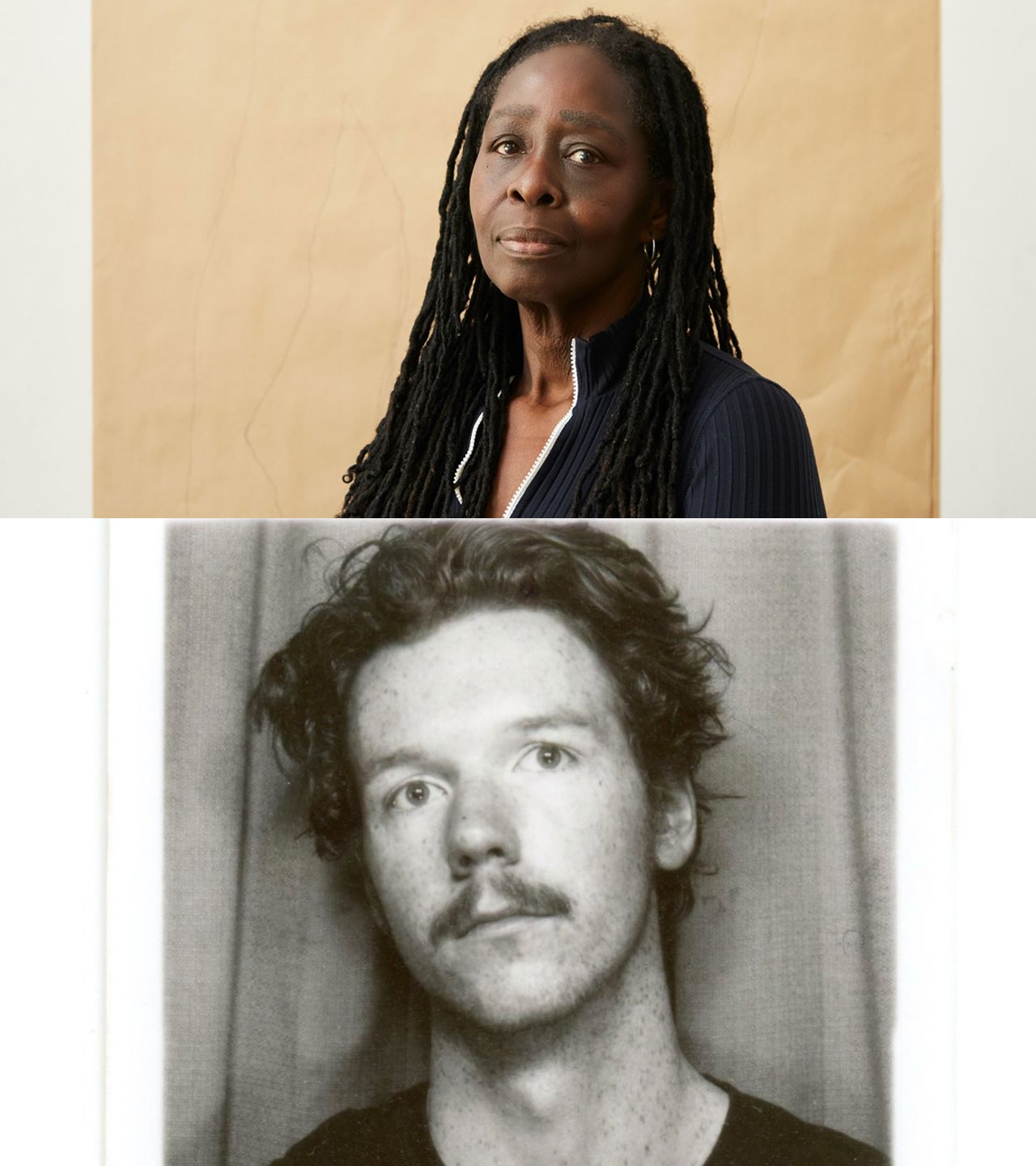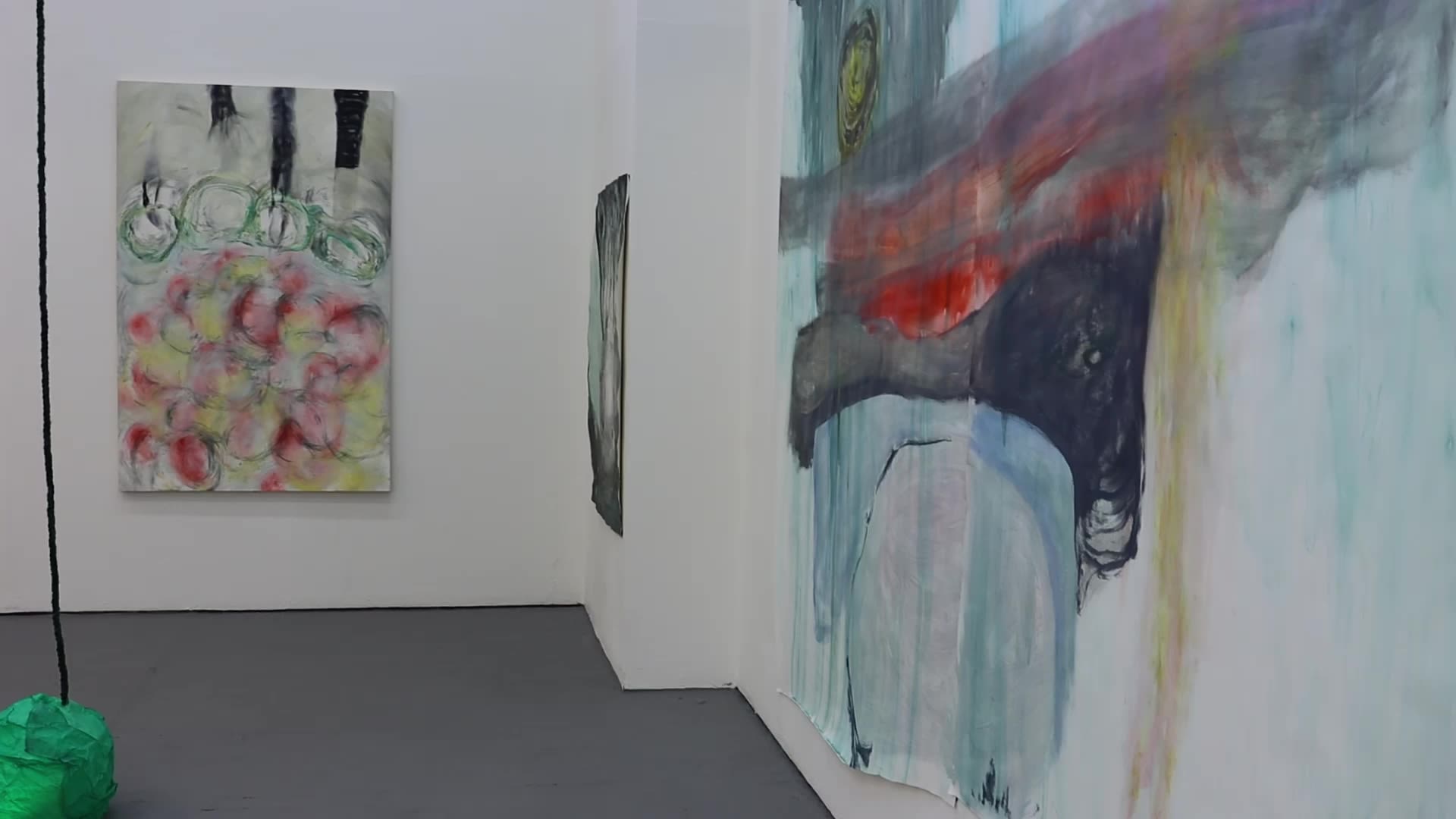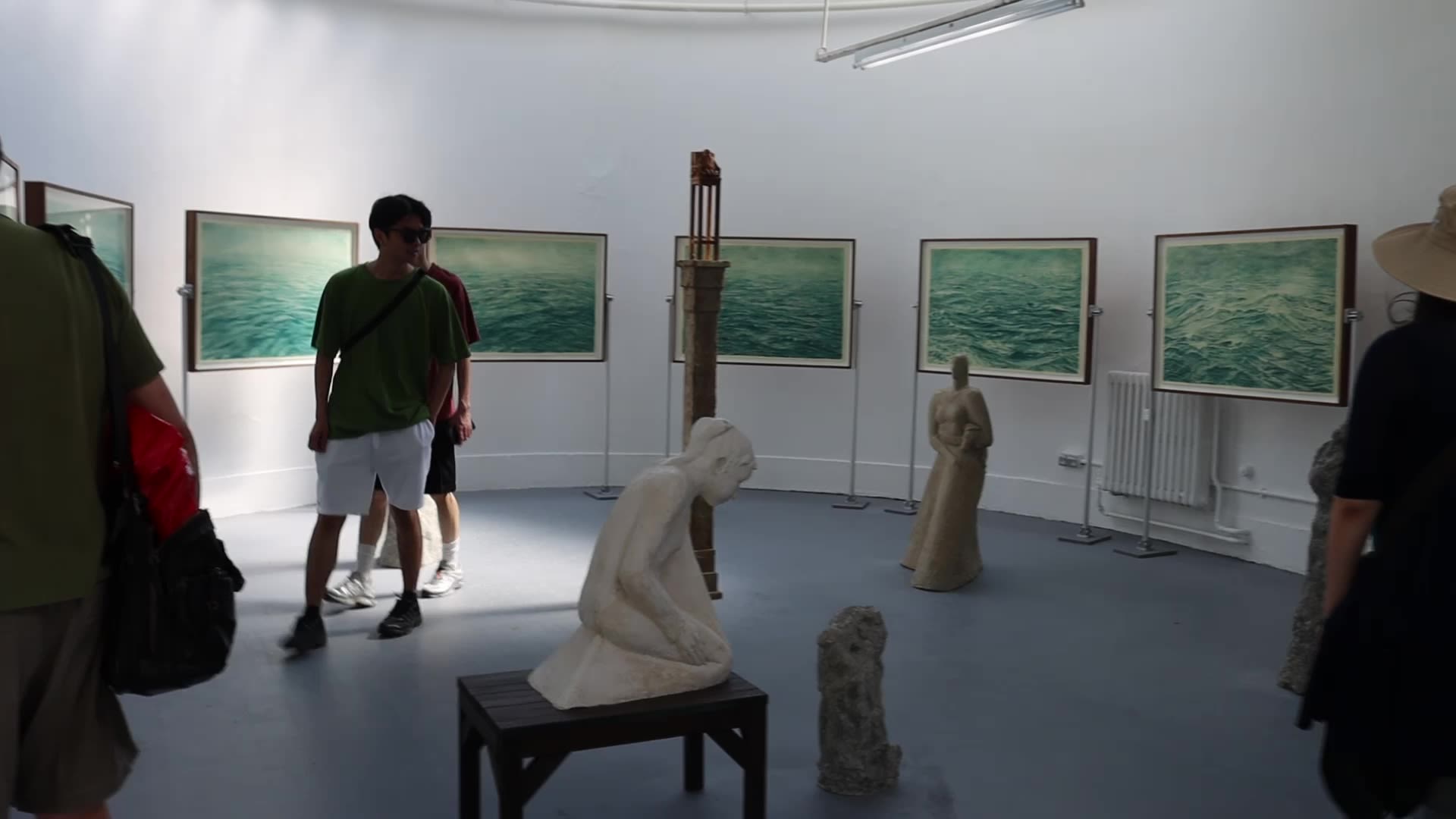In Conversation:
Mary Evans & Liam Mullen
What should a contemporary art education look like? Slade School of Fine Art Director Mary Evans and MA Fine Art student and Student Representative Liam Mullen discuss.

What is contemporary art?
Mary I would say contemporary art is the making practice that fine artists get involved in. It’s the everyday investigations that artists take part in to understand our world through visual means.
Liam I share a similar understanding and definition. I think contemporary art practice is a matter of interfacing ideas with the material; you're putting language to your thinking through your making, or through writing and conversation. But it's not just for yourself, it's also for an audience. It's for publics – plural: different communities. And it becomes a site for conversations that can potentially begin to metabolise contemporary issues: things that we're experiencing together and separately.
Why is contemporary art important?
Mary It's important as a way of understanding the world. I'm reminded of a scene in the film The Devil Wears Prada, in which the assistant says to the Meryl Streep character, ‘oh, I don't care about fashion’. And Meryl Streep’s character explains that actually, the whole world, in some shape or form, revolves around fashion – and I would say the same about art. Everything that we do, see, pick up, touch, has been designed by somebody. It's been conceived. This is how important art is.
I think art is incredibly important to our existence – our wellbeing, our thinking, our living. And it's a way of expressing: a lot of people express themselves through some kind of art practice. They might not necessarily think of it as art – my mum, for instance, is Nigerian, and she never had an art education, but she can knit, sew, crochet, and make anything. She wouldn’t consider herself an artist, but art is part of her life. I think art is a bit of a lifeblood.
Liam I’m the only person that does art in my family. My brother studies epidemiology. But in a way, we’re both studying ways of tending to cultures. If we look back, art allows us to keep a pulse on lost or forgotten conversations. Engaging in contemporary art offers the potential to gather a really rigorous and comprehensive sense of critical thinking through learning how to read art. I think that different ways of looking and relating are really important when we think how we can interact with each other.
"I think art is incredibly important to our existence – our wellbeing, our thinking, our living."

How does contemporary art respond to what’s taking place in the world?
Liam Something that seems pertinent now, especially within the Slade, is that we're coming off of Slade alum Jesse Darling winning the Turner Prize. A lot of the publicity for the prize that Jesse’s done has been probing accessibility in the arts and creating a common language through which we can approach social and economic issues. And coming out of a pandemic, I think there’s more emphasis being placed on creating a community and our commitments to each other. I think we have to create some sort of structure so that we can think with each other rather than in isolation. We’re living in frustrating times, but that frustration can be a generative thing that fosters possibility.
Mary It’s the grit in the oyster. As an artist, you might not say that your work is investigating any of the issues that have cropped up in the last several years – Covid, Me Too, Black Lives Matter – but I don't think you can help but be affected by them. Your work will be mediated through what's happening in the world. And with social media, we’re all so aware now of what's happening in the world that, as a result, we as artists are perhaps expected to be more responsive in ways that we might not have been previously.
Liam Yes, it feels like there’s an expectation that's been set. There’s a phrase I first heard from Professor Michelle Murphy: ‘what do you do now that you know?’. And an extension of that is, ‘what's a scalable thing that you can do?’ – something that can maybe enact change or action. I think what a studio practice gives you is the space to be able to think through these kinds of complex things on your own. But at the same time, because it's a shared space, too, you can learn to be vulnerable with other people.
What should a contemporary art education at a leading art school look like?
Mary Earlier, Liam used the word accessibility, and I think an art education needs to be accessible. At the risk of sounding worthy, it needs to be inclusive and diverse. Earlier in my career, when I was working as an educator in art galleries and museums, I'd have young people living in Tower Hamlets who were interested in art come to the gallery that I worked at in Whitechapel, and we’d chat about the artwork. And I’d ask if they’d visited the gallery before and they’d say ‘no, we can’t come to places like this’.
It was similar when I worked at the National Gallery. I’d ask school parties, ‘who do you think owns these paintings?’, and they say ‘the Queen’ or ‘the Prime Minister’. Then I’d say, ‘well, actually, you own these paintings. This is the UK’s collection of art, and these are yours, and you can come and see them whenever you like’. There was always this feeling among the young people that galleries or museums are daunting, so accessibility is really key. I think less and less emphasis is put on visual arts as a part of our education, which I think is short-sighted. I'm a huge fan of the Foundation course in Art & Design, because students are introduced to various art disciplines that they might not have heard of at school.
Liam I think space for collaborative opportunities is super important, because then you can learn outside of your discipline, which by extension is like learning from outside of yourself. I think that you learn a lot more from other people and through dialogue, and that's the benefit of things like critique, where there's the potential for vulnerable interaction.
Thinking about community is especially important for the Slade right now because we're preparing for our new BA Art and Technology programme that will be taught at UCL East. We’re learning how to maintain the community within our existing Master's programmes, taught in Bloomsbury, with people in a different building than us. We’re different satellites orbiting the same sorts of ideas and thinking about where do we meet halfway.
Mary One thing I like about art education at the Slade is that it's not a kind of top-down pedagogy. It's about students and lecturers together working out what art is or what art could be. It’s very much a give and take. And there's not necessarily one right answer, which makes it exciting. This is true from the first year of our BA and BFA courses up to MA. Here at the Slade, we're all artists, whether you're a lecturer or a student and quite often if you’re Professional Services staff.
"We have to create some sort of structure so that we can think with each other rather than in isolation."

How has art education changed over time?
Mary In March 2020, we had to pivot and learn to be online. I'd never heard of Zoom before then! So, we as educators had to learn Teams and Zoom and switch everything to digital. And then we gradually were able to be back in the buildings and adopted a hybrid approach.
Despite this shift to digital, I’m finding that students are actually wanting to discover the analogue. They might be digital natives, but they are really wanting to go into a dark room and develop film or do lithography or etching. They’re really interested in these centuries-old methodologies that I think a lot of art schools in the last 20 years have been very short-sighted in jettisoning. It might be an old-fashioned technology, but what you do with it is always going to be contemporary.
But it’s pros and cons. Something great that happened because of the pandemic was being able to have talks from artists based in Berlin or Copenhagen – all over the world. I don’t think we can go back to a time before this.
Liam I’m fortunate that I live in one of the art metropolises of the world, but there are so many satellites out there that are important and need to be tended to. Online platforms have given me the ability to participate in communities that aren’t in London. We have the capacity now to open up our work to literally the world, which is interesting.
How is the Slade making art education more accessible?
Mary We have two summers schools: one in Bloomsbury and one in UCL East. I think these are really important for giving young people a taster of what they might be doing when studying art at degree level. We wouldn’t be able to run these schools without the fantastic support of donors like Sadie Coles HQ.
We also offer short courses, which are part of our lifelong-learning offer. I think those exemplify the diverse experiences of artists: it's not just about pursuing a degree and becoming a hotshot artist. It could also be about just coming every Saturday to the Slade and doing a drawing class. Art can mean different things to different people and at different levels.
What are your hopes for the next generation of art students?
Liam I think here in London, in a city that's so rich with art schools and established art communities, it would be fantastic if all of these places could come together, talk to each other, communicate and collaborate. Spread across these institutions there's just so much potential. So I would hope that there would be the capacity for collaboration in the future.
Mary When I was appointed director of the Slade, I asked a question in my presentation, and the question is something that I've since asked staff about. The question was: what does a post-Brexit, post me-too, post-covid, post-Black Lives Matter, 21st-century arts school look like? I’m hoping that in 2026, to coincide with UCL’s bicentenary, we’ll hold a public event to ask this question.
If I look back over the last 40 years, since I was a student, I can see how art schools have changed. But we can’t just wait for another 40 years to see what happens next; we need to be proactive about looking at what’s happening in order to design an art school for our times.
Mary Evans is Director of the Slade School of Fine Art. Liam Mullen studies MA Fine Art and is a Student Representative at the Slade.

Portico magazine features stories for and from the UCL community. If you have a story to tell or feedback to share, contact advancement@ucl.ac.uk





